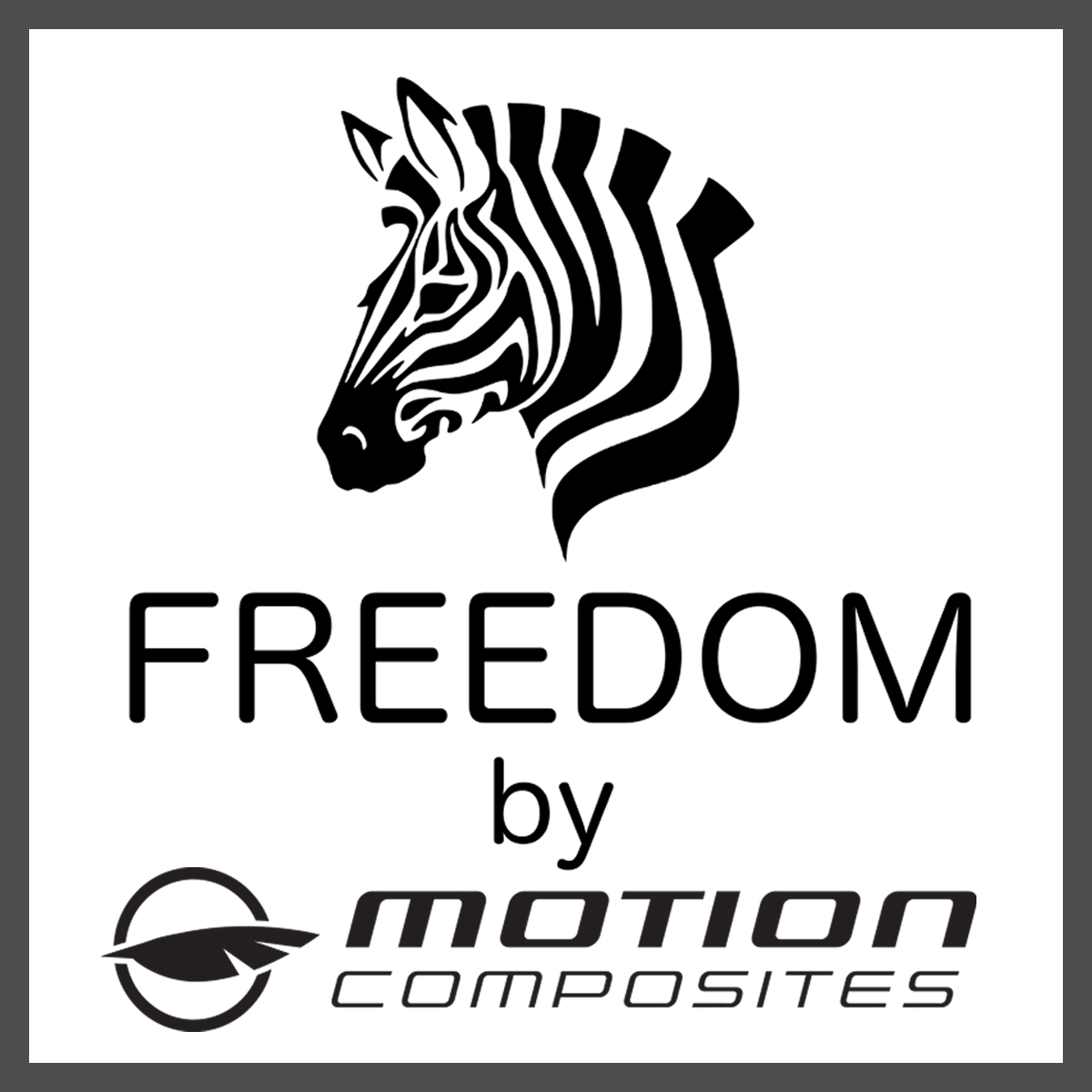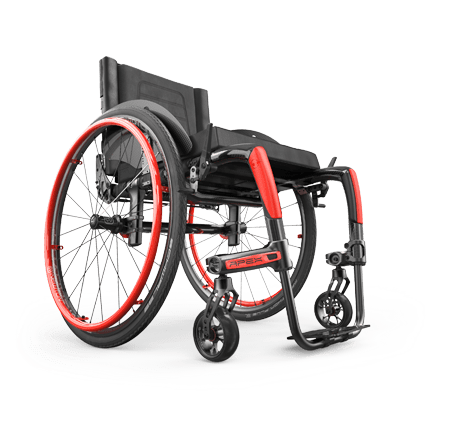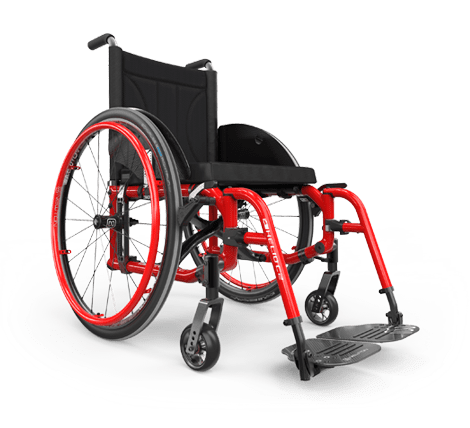After spending years trying to figure out how to allow her daughter mobility and independence, and after meeting with the Motion Composites team she got her daughter an APEX-C. In this interview, Debbie talks about her daughter’s story. She shares her struggle to help Ali through this process and how her new carbon fiber wheelchair completely changed her life, and her family’s, for the best.
Let’s start this interview by talking about your relationship with Ali. What kinds of activities do you like to do together?
Ali loves Disney. Pre-pandemic, we were going to Disney all the time, because it’s only a few hours away. That’s actually where we really started to notice her pain. She went from being able to walk around the park to having severe leg pain and not being able to walk through the park. We got stranded in one of the Disney parks once and my husband had to go and ask security for a wheelchair to get her out of the park.
Now, we also love to spend time together outside, in our neighborhood. We call our mother and daughter outings “walks and rolls”. So we go on walks and she rolls!
Did you notice anything prior the Disney occurrence?
Yes, in fact, it really started when she was little. Her feet always turned in. I think she was four or five when she stopped ice skating. She loved ice skating, but she stopped because it was hurting her feet. In the dance classes, everybody was kind of progressing along, where she was struggling more. She couldn’t really keep up as much. We went to multiple podiatrists or orthopedists, back doctors, etc. And then finally, one hip doctor told us she had tibial torsion and femoral anteversion, which were causing some of her pain. He is the one who really wanted us to go and explore Ehlers-Danlos because she was so hypermobile. He really set us up on that path. Over the last two years, the pain increased even more. We tried physical therapy. She went to three physical therapy centers, which caused her so much pain. We also tried aquatic therapy. And then, she was diagnosed with POTS and dysautonomia. She gets dizzy and could pass out if she’s not hydrated properly. The EDS diagnosis was a little over a year ago.
How was it for you, as a mom, to accompany Ali during her journey adapting to her condition?
It’s been stressful, to say the least. It is very overwhelming and heartbreaking to watch your kid in pain. You feel helpless as to how to help her. It’s like running around in circles, I just felt like I was chasing my tail all the time. One doctor leads to another doctor who leads to another doctor. And then, everybody questions each other. It’s really frustrating.
Were you able to get any kind of support, as a mom?
Yes! I was so desperate to find other moms that would understand what my family and I were going through. On Facebook, I found a whole bunch of support groups and it has been the most helpful thing ever. I found Pediatric Pain Warriors, they have been amazing. I’ve learned so much from them. Ali has connected through a whole bunch of support groups too. She searches them up on Facebook or Snapchat and finds some on her own. We were also able to connect on Facebook with other kids going through the same thing as Ali in our area. We went horseback riding with one of the girls that we met. Went out to dinner with another girl.
When did you realize that she might need a wheelchair?
When she couldn’t get around the parks, and also going to the mall was a struggle. I think she was around 10 years old when something happened at the mall. She was in the middle of the mall. It wasn’t that big of a distance but she was in tears, holding on to me that she couldn’t walk the rest of the way. It was crazy.
Talk to us about Ali’s first wheelchair.
The very first chair we had was a lightweight transport chair. We took that one to Disney a couple of times. Ali was miserable because she had zero independence. She couldn’t push herself. Then, the Knights of Columbus lent us a standard wheelchair. I ended up hurting my wrists putting it in and out the car. I didn’t want to take her anywhere because it was so heavy, so we were pretty stranded. Then, I purchased a used chair. The ad said it was “ultra-lightweight.” I picked it up and thought that was great at the time! Even though it was lighter than the previous chair, it was still gigantic… At least I could get it in and out of the car and we could go places. It was uncomfortable for Ali but at least I could get her around.
Since it was my first experience looking for mobility aid, I didn’t know who to talk to or where to look. I didn’t know that there were other options besides those chairs or that there were different brands of wheelchair manufacturers. I didn’t know that a seating clinic even existed. I was desperate to find something that was right for Ali but I didn’t have sufficient information to know where to go or what to even look for. I hear the same story over, and over, and over in all of these mom support groups. You’re just so desperate to get something to help your kid. I think that it often happens, especially with EDS, that families will grasp at anything they can get a hold of. In the end, it takes meeting that right person that will really give you the information you need in order to find mobility aid that works.
How did you first hear about Motion Composites and the APEX?
The founder of Pediatric Pain Warriors invited Christie Hamstra (editor’s note: Christie Hamstra is a part of the Motion Composites Education team) to come and do a Zoom and educate everybody on the wheelchair procurement process, and she hooked me up with Christie. And then, we got to talking and she helped us through the process of getting a prescribed wheelchair.
How did Ali feel when she tried the APEX for the first time and how is it going since then?
When Ali tried the APEX, she just loved it right away. She said it was so comfortable, her back felt so great in it, she felt supported. She loved how she was able to move around the room so smoothly.
It’s been at least a few months now and it’s night and day. She is not embarrassed anymore. She used to be totally embarrassed to be outside in the first chairs we bought. She couldn’t really push her chair independently. She could do about five minutes before tiring out. The wheels weren’t set at the right spot, her arms weren’t positioned properly. It was terrible.
And now she can independently go around the neighborhood with her friends. We went to a store the other night and she rolled around that store for 45 minutes, all by herself. She said it was the most liberating experience to be able to get around a store, by herself, without worry.
What was the impact of the chair on your family?
It’s just been so nice to be able to see her gain some independence back, and not need me as much to get around. One of the neat features of the chair is that since it moved so easily, we are able to go out for a good hour, hour and a half just walking and rolling around the neighborhood. To be at her side and have a conversation with her is just so nice. She loves to whiz around the hills!
We heard you even created a shirt to celebrate your daughter’s new chair!
Yes! Ali had decided she wanted a “freedom day”! I have one of those Silhouette machines where you can make your own t-shirt. I just pulled the Motion Composites’ logo from the internet and designed it!

Debbie's design for Ali's t-shirt.
Finally, do you have a message that you’d like to share to other moms going through the same challenges as you did?
Listen to what your kid is saying, not what society is saying. If your kid is in pain and they’re missing out on things in life because they can’t around, a wheelchair will give them back so much independence. Ali has really taught me that having a mobility aid is a way to have independence and not be held back. It’s a question I hear from other moms all the time. It’s a hard decision to let your kid have a wheelchair. Is this going to make them weaker or do less? But in our experience, it’s gotten her to do more because she can go places and she can have fun and be happy like the other kids.
We really want to thank Debbie Kadet for taking the time to talk to us and share her family’s story. If you want to learn more about EDS and how therapists can justify and document their client's need for a custom ultralightweight wheelchair, please read Education Specialist Christie Hamstra's blog post.








